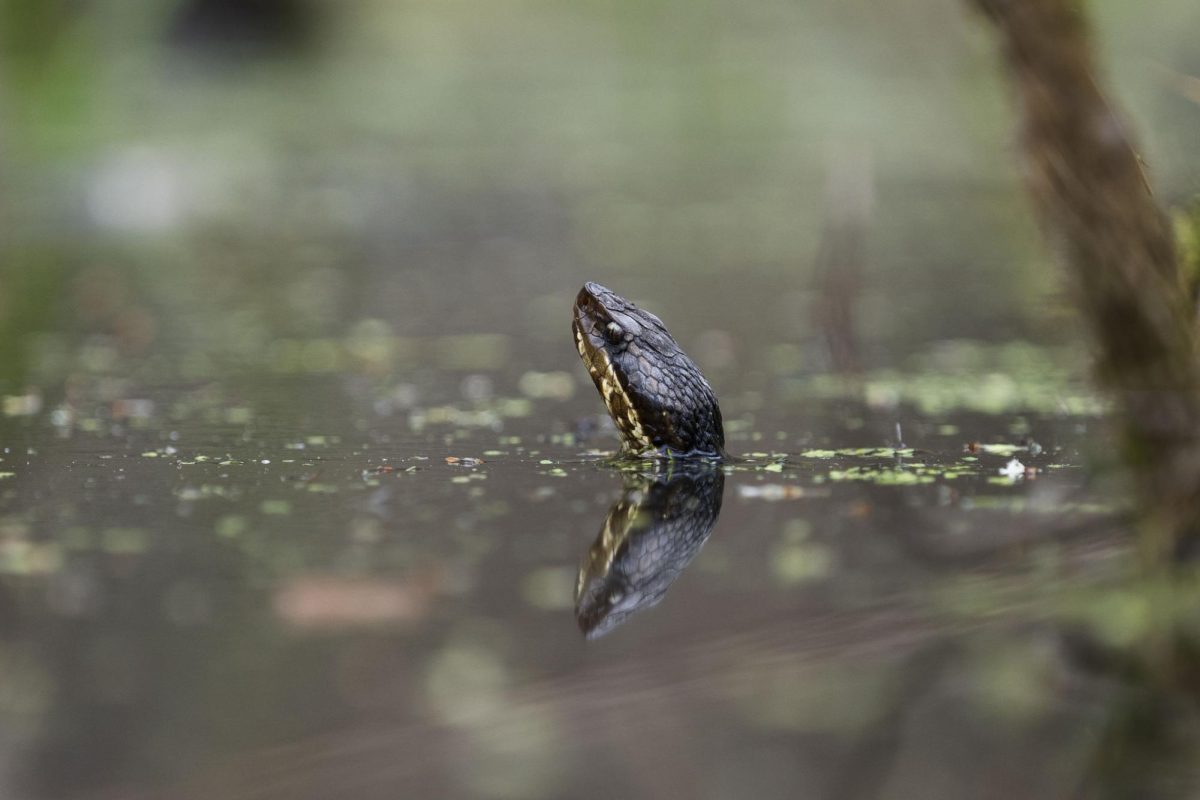Animals aid quest for knowledge
December 1, 1997
D.E. Campus Life Editor
Doug Smith observes a rat that is looking down the distance of a 4-foot tube where it sees a cherry fruit loop in the distance and decides to go for it.
This sounds like an unlikely scenario for a normal day’s work for most, but for Doug Smith, this is one of many stimulating daily experiments.
Advertisement
Smith, an associate professor of psychology and member of the Institutional Animal Care and Use Committee, works with rats. The rats are tested for memory capabilities. Smith attempts to figure out brain mechanisms of memory and the functions of various areas of the brain on memory.
One particular experiment tests the memory of recognition. Rats are placed in a large mechanism called a radial arm maze. The maze has a central arena with 12 radiating arms. Each arm is 4 feet long. A fruit loop is placed in eight of the 12 arms, and the rats are given a set time to find and recall where the fruit loops are located.
The rats have to remember where they have been to retrieve food. The process occurs several times.
It’s a lot like Halloween, Smith said. If you go to a house that doesn’t have any candy, then you’re not going to go back to it. It’s the same principle we’re working with.
To gain insight into the areas of the brain that are integral with the memory gathering process, Smith administers anesthetic to the rats. The anesthetic shuts off certain areas of the brain for about 30 minutes.
We use the technique of (brain) inactivation, which lets the animal learn something, then we inactivate a part of the brain and see if the permanent memory is affected, Smith said.
The goal of Smith’s tests are to discover how the brain stores information, and then find things that improve memory. The research may be of help to people who suffer from brain damage or learning disabilities.
Advertisement*
Andrzej Bartke is another one of about 30 animal researchers at SIUC working closely with live specimens in the hopes of making significant medical discoveries that will benefit the human race.
Bartke, professor of physiology of the School of Medicine in Carbondale, received his master’s degree in Poland before attending the University of Kansas in Lawrence, where he earned his doctorate in zoology. Bartke arrived at SIUC in 1984, and he has continued to study live animal specimens.
Bartke’s research investigates differences in longevity between Ames dwarf mice and normal mice. Ames dwarf mice, so named because they were first found in 1960 at the University of Iowa in Ames, live an estimated year longer than their normal-sized counterparts.
With this particular project, the obvious goal is to determine why dwarf mice live longer than normal mice, Bartke said.
In the course of our studies we noticed that animals with high levels of growth hormone don’t live as long as animals with no or little growth hormone. Because of this I ask, What would be the effect of lack of growth hormone on life expectancy?’
The study compares normal mice with dwarf mice that do not produce growth hormone. Bartke suspects that the longer life span of the Ames dwarf mouse is related to growth hormone, but other factors related to the differences are a possibility.
A researcher has to submit a protocol request to the SIUC Institutional Animal Care and Use Committee, which follows federal guidelines to ensure the humane treatment of tested animals.
At SIUC, the most frequently tested animals are mice, followed by rats, hamsters and rabbits. Animals are purchased by the Institutional Animal Care and Use Committee through a licensed commercial supplier.
Animal research is ongoing in the School of Medicine, the College of Science, the departments of physiology and biochemistry as well as other departments and colleges at SIUC.
In another medical experiment, Laura Murphy, assistant professor of physiology, is using marijuana and ginseng to study physiological reactions in rats. The marijuana is administered to female rats to better understand neurochemistry of the female brain.
Murphy also is studying the effects that ginseng has on the prevention of mammary cancer in rat populations. The study began two months ago, and results are expected to begin showing up in four more months.
Murphy has been involved with the marijuana experiment for eight years. She received a $75,000 grant two years ago to aid her with research costs. Grants come from federal and state governments, private industry and private associations.
I’m trying to get a better grasp of how the marijuana affects the brain, she said. I’m studying the harmful effects and possible therapeutic effects.
Through Murphy’s laborious efforts, she, like most researchers, hopes her studies will cross over into the human arena and provide useful information pertaining to human health and bettering health information.
And as the researchers hope to use the animals to better human health, the animals are cared for while being used for experiments.
We take precautions to ensure that these animals are treated humanely, Smith said. Someone may jump to conclusions and say that we are starving the rats, only feeding them fruit loops. That’s not the case.
Advertisement









